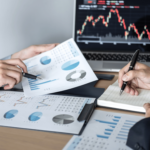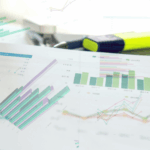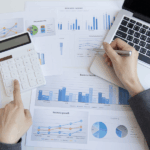Households and financial experts are observing notable shifts in consumer borrowing patterns as uncertainty about tariffs and broader economic factors weighs on spending. New observations indicate that consumers have tightened their credit use while cautious monitoring of economic signals continues. Some financial institutions and independent studies have highlighted changes that suggest a rebalancing in credit usage with potential implications for payment behavior in the near term.
Additional research has recorded varied movements in consumer credit activity across multiple regions. Several reports confirm that while overall borrowing has fallen, specific segments such as revolving credit and nonrevolving loans display mixed trends. The newer information complements earlier data that pointed to a general restraint among borrowers.
Recent figures from the Federal Reserve reveal a decline in overall consumer credit. Total outstanding credit dropped by more than $800 million, a reversal from prior gains that had exceeded expectations. The measure recorded a 0.2% annual decrease, marking a third decline in a span of four months.
Consumer Borrowing Overview
Data show that while total credit contracted, spending on credit cards experienced marginal growth. Although less pronounced compared to earlier months, this increase signals a persistent need for revolving credit. Analysts note that the adjustments in credit flows present a nuanced picture of economic activity where households appear to balance between reducing overall debt and relying on accessible credit mechanisms.
Loan and Payment Terms Update
New lending trends also include a modest rise in revolving debt measured at an annual rate of 0.1%, a stark contrast to the previous month’s 6% annualized boost. Meanwhile, loan terms for new car financing averaged around 8.06% for 60-month plans and 8.16% for 72-month terms, figures that sit below the yearly average but remain significantly higher than earlier benchmarks. Personal loans have shown slight improvements, although credit card interest rates persist at elevated levels near 21.4%.
Households have increasingly turned to alternative credit methods such as Buy Now, Pay Later (BNPL) for day-to-day purchases. Research by PYMNTS Intelligence along with findings by Splitit indicate that a sizeable portion of Americans, including many with higher incomes, now rely on BNPL options. These evolving choices underline shifting consumer strategies in managing essential and impulse expenses while navigating uncertain economic conditions.
The landscape of consumer borrowing now reflects a careful reassessment of available credit combined with selective use of alternative payment options. Current trends suggest that while overall credit levels drop, demand for immediate purchasing power remains steady. Readers may find it useful to monitor developments in interest rates and loan conditions, which could influence borrowing behavior as economic pressures persist.










